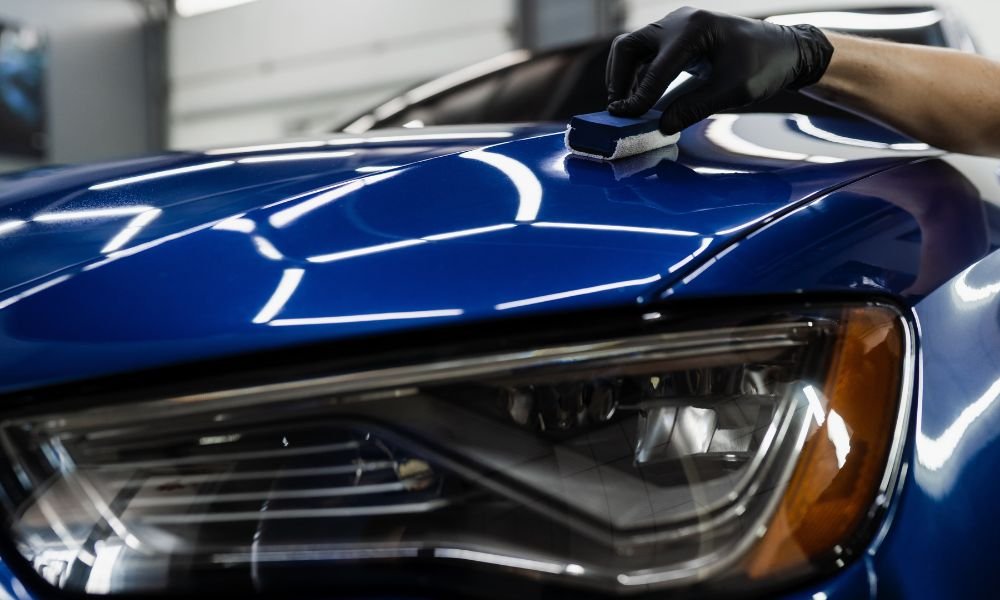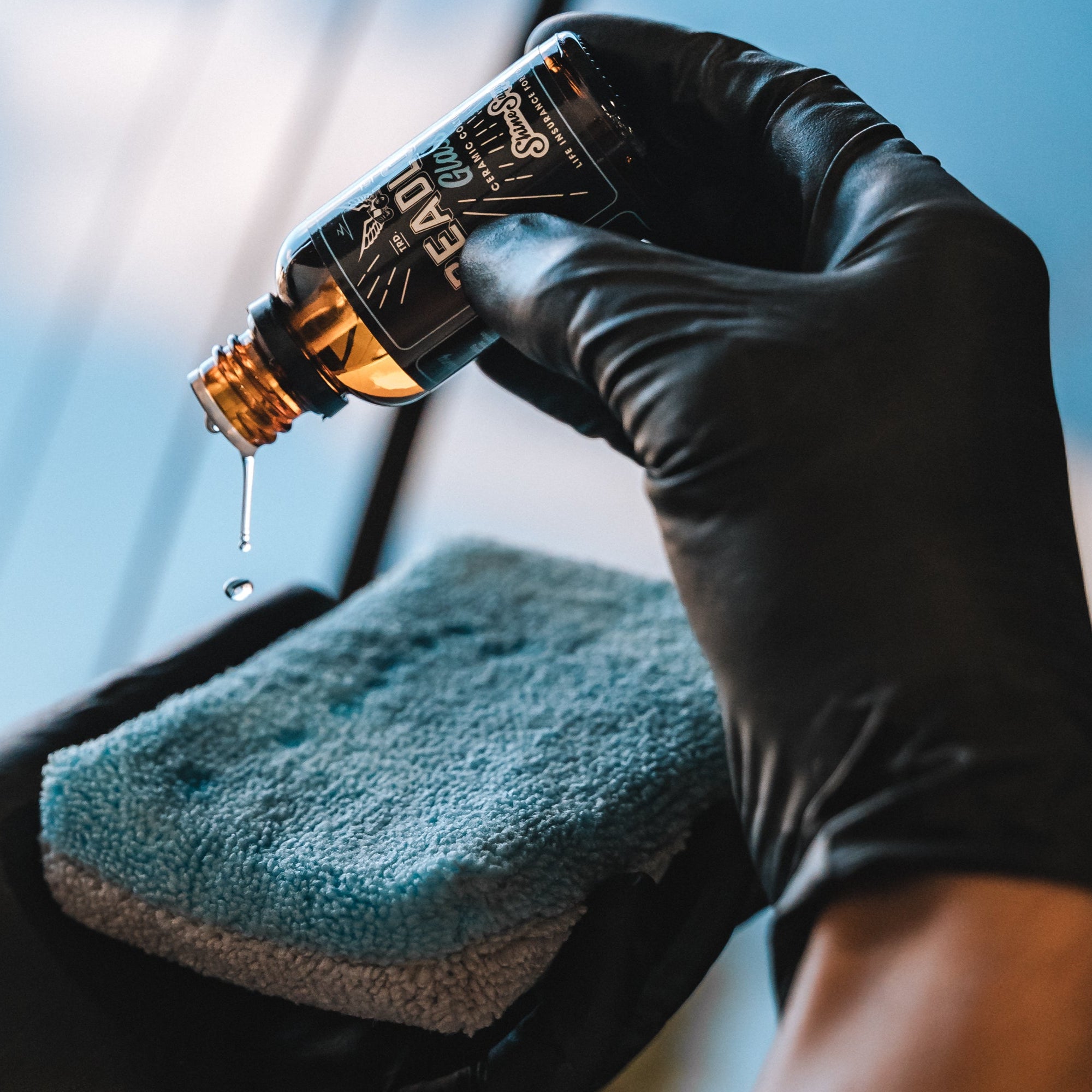A Comprehensive Guide to the Kinds of Ceramic Finishing on the marketplace
Ceramic finishes have become a pivotal option across different industries as a result of their distinct residential properties and applications. From silica-based solutions understood for their effectiveness to hybrid choices that merge several advantages, the choices offered can be frustrating. Recognizing the subtleties of each type, including their particular benefits and ideal usage situations, is important for making educated choices. As we check out the unique characteristics and applications of these finishings, the ramifications for efficiency and durability come to be increasingly evident, raising concerns about which type may finest suit your demands.
Understanding Ceramic Coatings
Ceramic coatings are innovative protective services that have gained appeal in various sectors, specifically in auto and aerospace applications. These finishings include a liquid polymer that, when cured, creates a durable, hydrophobic layer externally of the substrate. This layer supplies boosted resistance to environmental impurities, UV radiation, and chemical direct exposure, thus prolonging the life and aesthetic allure of the underlying material.
The basic element of ceramic finishes is silica, which adds to their hardness and durability. The application procedure generally includes surface preparation, application of the finishing, and healing, which can be achieved with heat or UV light. When healed, ceramic finishes display phenomenal bonding properties, allowing them to stick highly to a selection of surfaces, including metals, plastics, and glass.
Along with their protective functions, ceramic coatings additionally use simplicity of maintenance. Their hydrophobic nature lowers the adherence of dust and grime, making cleansing easier and much less regular. Overall, the adoption of ceramic finishes stands for a considerable improvement in surface area security technology, supplying both practical and aesthetic advantages across multiple markets.
Kinds of Ceramic Coatings
Various types of ceramic layers are readily available, each created to fulfill certain performance needs and applications - Paint Protection Film. One of the most usual types include:
Silica-based Coatings: These layers largely contain silicon dioxide and are recognized for their durability and chemical resistance. They are extensively used in vehicle and industrial applications.
Titanium Dioxide Coatings: Popular for their photocatalytic buildings, titanium dioxide layers are frequently used in environments where self-cleaning and antifungal residential properties are preferable, such as in building products and automobile surfaces.
Zirconia Coatings: Identified by their high-temperature security and thermal resistance, zirconia coverings are made use of in applications such as turbine engines and high-performance vehicle parts.
Alumina Coatings: Showing exceptional solidity and thermal security, alumina coverings are often used in wear-resistant applications, consisting of cutting devices and commercial equipment. - Car Detailing
Hybrid Coatings: Combining the properties of find more info numerous products, crossbreed finishes offer improved efficiency attributes, making them suitable for special and demanding applications.
Each type of ceramic finish serves distinct objectives, permitting users to choose the most ideal option based on certain environmental conditions and performance needs.
Benefits of Ceramic Coatings
Coatings play a critical function in improving the efficiency and durability of surfaces across various sectors. Ceramic finishings, in certain, deal numerous advantages that make them progressively preferred among manufacturers and customers alike. Among the key advantages is their exceptional resilience. These coatings are resistant to scratches, chemicals, and UV rays, guaranteeing that the underlying surface remains safeguarded gradually.
In addition to toughness, ceramic coatings supply outstanding hydrophobic residential properties, enabling for easy cleaning and maintenance. This water-repellent nature reduces the adherence of dirt, grime, and other impurities, which can extend the visual allure and functionality of the surface area. Ceramic finishings can considerably enhance thermal resistance, making them suitable for applications that sustain high temperature levels.

Application Process
When using ceramic layers, a meticulous method is important to achieve optimal results. The application procedure commonly begins with comprehensive surface area preparation. This includes cleaning, decontaminating, and brightening the surface area to get rid of all contaminations, including dust, oil, and prior waxes or sealants. A tidy surface area guarantees appropriate adhesion of the coating.
When the surface area is prepped, the next action is to use the ceramic coating. The layer needs to be Auto Detailing applied in thin layers, as thicker applications can lead to irregular surfaces.
After application, the finish needs a particular curing time, commonly varying from a few hours to a complete day, depending on the product. Adhering to these actions faithfully will make the most of the performance and durability of the ceramic layer, giving a long lasting protective layer for the surface.
Maintenance and Durability
To make certain the longevity and effectiveness of a ceramic finishing, regular upkeep is crucial. Ceramic finishings, recognized for their sturdiness and protective high qualities, require particular treatment routines to maximize their life expectancy and performance. The first step in maintenance involves routine washing with pH-neutral soap, avoiding severe chemicals that can weaken the finish. It is advisable to wash the automobile consistently, preferably every 2 weeks, to avoid the accumulation of impurities that might endanger the layer's stability.
In enhancement to routine cleaning, routine assessments are vital. Search for indications of wear or damage, such as hydrophobic residential properties diminishing or surface area imperfections. If needed, a light gloss might be related to rejuvenate the finish without stripping it away.
Furthermore, the application of a booster spray can enhance the coating's hydrophobic effects and restore its gloss. This is especially valuable for finishes that have actually remained in use for an extensive period. Inevitably, by adhering to these upkeep practices, one can substantially extend the life of a ceramic layer, guaranteeing that it remains to offer optimum security against environmental aspects and maintain the aesthetic appeal of the click here for more lorry.
Conclusion
